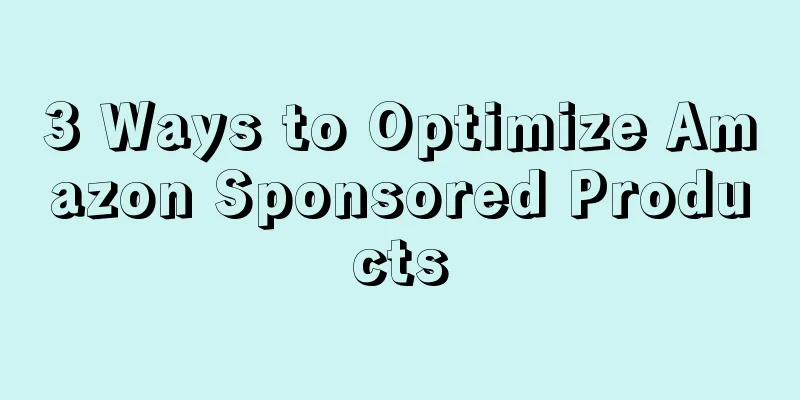Why Choose Amazon Sponsored Products?
In the increasingly competitive Amazon environment, sellers need to use every tool at their disposal to get their products in front of new audiences. Amazon Sponsored Products is and will continue to be one of the most powerful tools to drive discoverability and incremental sales for Amazon sellers.
For those unfamiliar with the platform, Sponsored Products exist within the Amazon Marketplace and drive traffic to Amazon detail pages. These ads exist in Amazon search engine paid results, on the right side of Amazon SERPs, at the top and bottom of SERPs, and in carousels on product detail pages.
As more sellers join the Marketplace to gain market share, prices within the Amazon platform will increase. As demand for bidding auctions continues to grow, Amazon sellers will need to implement new advanced paid marketing campaigns and strategies to win new customers and increase customer loyalty.
Let’s take a look at three Amazon Sponsored Products optimizations every seller should leverage in 2017 to outperform the competition and increase conversions.
The Fundamentals of Amazon’s Sponsored Products Auctions
Before we dive into how to optimize your Sponsored Products (SP) strategy, it’s important to understand the basics of how SP auctions actually work.
When a customer searches or browses Amazon products, Amazon finds all sponsored product ads that contain keywords that match the customer’s search or browse page. For automatic campaigns without keywords, product content is used to determine relevance.
Amazon’s first step is to remove all ads that are not currently winning the Buy Box.
The ads are then analyzed for relevance. Ads determined to be irrelevant will be removed from the auction.
Let's apply this process to an example. If a customer searches for the term “toaster,” Amazon will find all Sponsored Products ads that contain keywords that match the customer’s search or browsing page.
If a seller bids on the keyword “toaster” in an ad group that contains an ad for kitchen gloves, Amazon will determine that the ad for kitchen gloves is not relevant and remove it from the auction. The remaining ads will then be ranked in ad rank order and displayed to Amazon customers. The order in which ads are ranked depends on the seller's bid and the likelihood that the ad will be clicked.
Pro Tip: Keep in mind that campaigns that are active for longer are more likely to show ads — click history plays an important role in Amazon’s bidding algorithm.
In a recent xSellco and CPC Strategies webinar, David Cooley, Marketplace Manager at CPC Strategies, shows sellers how to win more customers with Amazon Sponsored Products.
How can Amazon sellers differentiate themselves from competitors to ensure their ads appear in search results?
1. Activity Structure
The first step to discovering the best Amazon keywords for your products is to set up an initial catalog campaign in Sponsored Products. This will include all of your products, whether you have a few SKUs or thousands.
It’s important to make sure your full catalogue is represented in terms of advertising – then you can start to find out the terms that customers and prospects are using in searches to find your products. The goal of Amazon keyword harvesting is to discover and bid on the keywords or search terms that customers use to search for your products.
In the past, the Amazon search term report provided sellers with a report that indicated the exact product SKUs associated with each search term, which was extremely valuable data. Unfortunately, Amazon updated this report so it no longer identifies products associated with the search term.
This change to the search term report inevitably makes it more difficult for sellers to identify the relationship between keywords and products. For example, we know that "toaster" performs well, but we can't match that keyword to a corresponding SKU.
One suggested solution is to structure your campaigns with one SKU per ad group. This way, you can attribute the success of a term directly to the SKU purchased or clicked. By segmenting campaigns, this solution directly impacts bidding strategies and the overall success of your campaigns.
Basically, the more granular your campaigns are, the more control you will have over your products, and the better informed you will be about which keywords or products to invest in.
2. Keyword collection
The next step is to harvest keywords. Since Amazon customers tend to buy based on what they are looking for, choosing the best keywords for your products is an important part of your marketing strategy. Choosing the right keywords for your products can improve your page sales rank and organic ranking, which will ultimately affect your product sales.
The tricky part is figuring out what are the best tools for keyword harvesting. While many third-party tools are great, they don’t provide advertisers with the raw data they need to make educated bidding and strategy decisions. Sellers should utilize the Sponsored Products Search Terms Report located in Seller Central as their primary source for keyword collection.
3. Finished product positioning
Negative keywords are just as important as popular keywords. If these keywords continue to receive traction without getting noticed, you risk wasting ad spend on poorly performing terms (e.g. low CTR, low conversion rate, etc.).
The goal of negative keywords is to ensure that sellers place their products before search terms that are actually relevant to the products they are advertising, while avoiding spend allocated to keywords that generate clicks without conversions.
Identifying negative keywords enables sellers to target specific audiences and ultimately improve the performance of sponsored product campaigns. If you start using negative keywords, you will start seeing a higher ROI.
In a recent blog interview, Nick Sandberg, Marketing Program Development Manager at CPC Strategy, discussed the advantages of identifying negative keyword terms. “If you’re spending a lot of money on sponsored products, you should definitely pay attention to negative keywords,” Sandberg advises. Sellers need to avoid spending a large amount of budget on keywords that don’t get any clicks. Identifying negative keywords in your Amazon Sponsored Products search terms report will eliminate irrelevant product keywords and improve your ROI.

